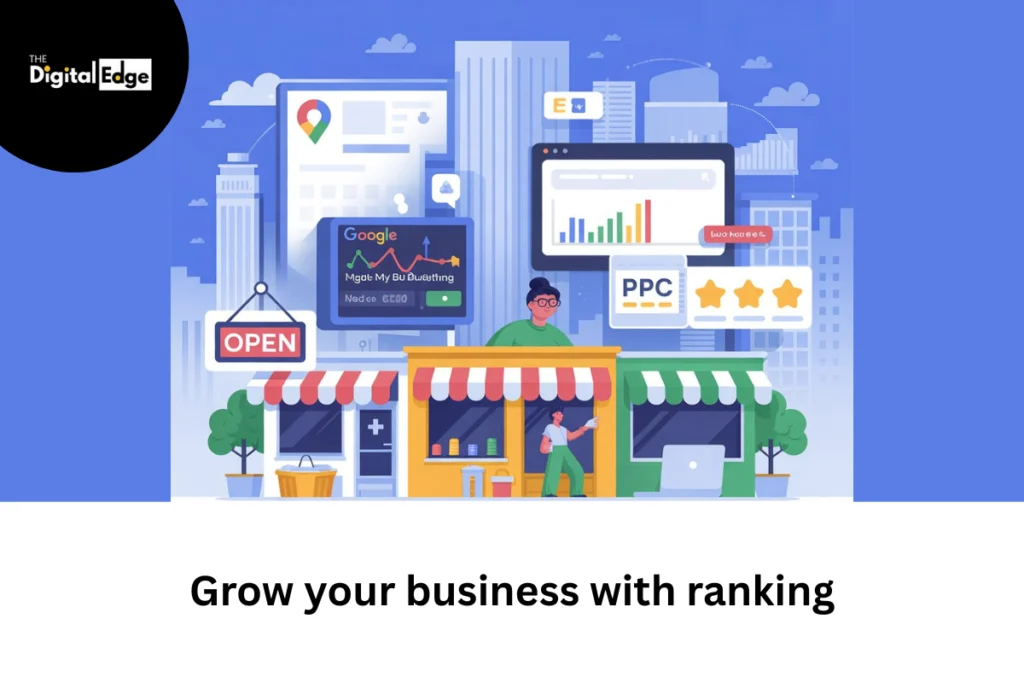Table of Contents
ToggleIntroduction : How Small Businesses Can Dominate Locally With Digital Marketing
If you’re running a small business in 2025, simply having a physical shop or offering quality services isn’t enough anymore. Today, visibility online is what decides whether your business thrives—or barely survives. Customers don’t just look for a store; they Google it, read reviews, check social proof, and only then decide to walk in or reach out. That’s exactly where local digital marketing for small businesses becomes a game-changer.
Using powerful tools like local SEO strategies, Google Business Profile optimization, social media marketing for local visibility, and content creation tailored to your region, even a small business can rise to the top of local searches. You don’t need a massive marketing budget—you just need smart execution, strategic keyword targeting, and timely engagement with the right audience in your geographic area.
At The Digital Edge, our mission is to help small businesses like yours get discovered online, attract qualified traffic, and grow in their hyperlocal markets. Whether you’re trying to boost footfall, generate phone calls, or increase website leads, our digital strategies are designed to work with your business goals—not against your budget.
In this blog, we’ll guide you step-by-step through essential local digital marketing strategies to grow your small business and establish a trusted, memorable local brand. You’ll learn how to fully leverage your Google My Business listing, understand why ranking on Google Maps matters, and how to show up when people nearby search terms like “best service near me” or “top-rated [your service] in [your city].”
We’ll also explore when to invest in local PPC campaigns, how to enhance brand visibility for local businesses, and when to double down on organic digital growth for long-term sustainability. No fluff—just actionable tactics you can use, even if you’re juggling marketing on your own.
Plus, we’ll cover reputation management strategies, email marketing for small businesses, beginner-friendly YouTube video marketing ideas, and smart keyword targeting to increase your search presence. Everything here is built to be practical, scalable, and suitable for local business owners managing day-to-day operations solo or with small teams.
Whether you’re running a cozy bakery, a salon, a local home repair service, or even an e-commerce store with a regional customer base, let The Digital Edge be your trusted partner in unlocking the power of affordable digital marketing. With the right mix of local SEO, targeted Google Ads, mobile-optimized web design, and a consistent online presence, your business can stand out, earn trust, and thrive in today’s digital-first, location-driven world.
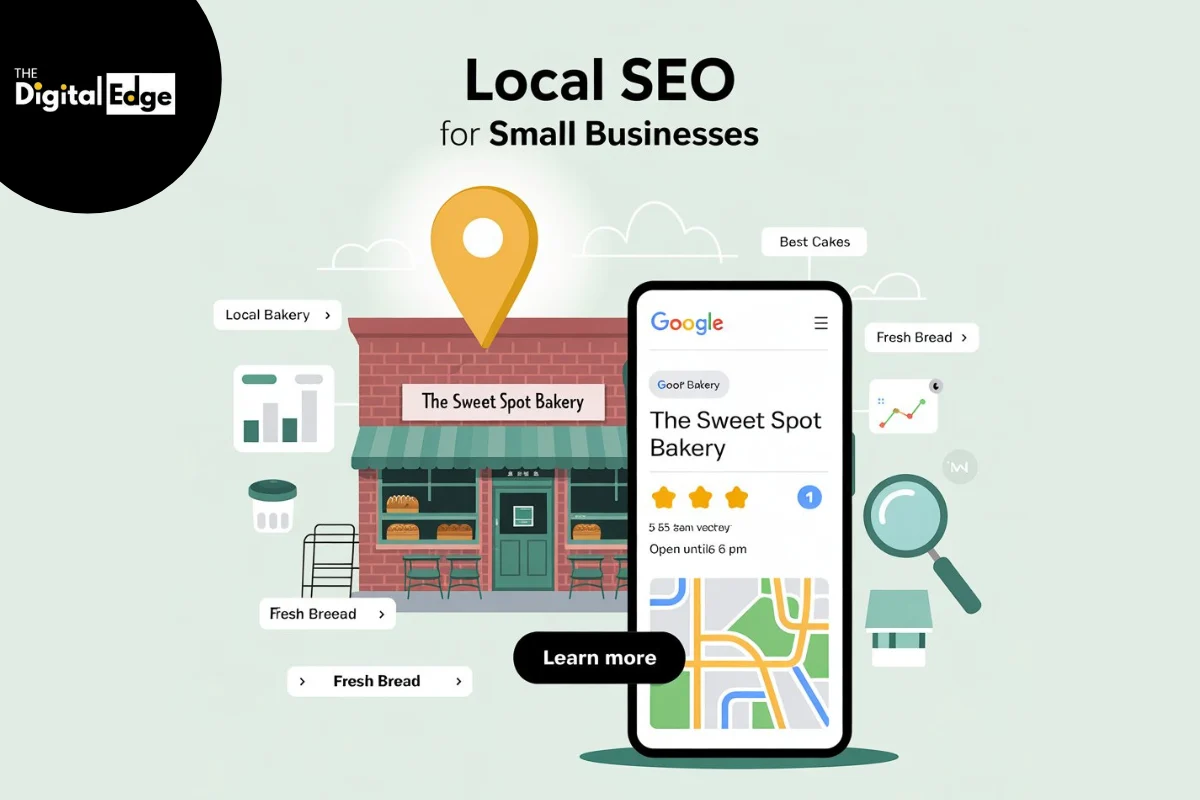
What is Local SEO in Digital Marketing for Small Businesses?
Most small business owners today understand that being visible online is crucial. But very few know how to truly leverage local search engine optimization (local SEO) to turn nearby searches into real business. That’s where local SEO comes in—the backbone of digital marketing for local growth.
Local SEO focuses on optimizing your business’s digital presence so you appear in front of potential customers who are physically close and ready to make a purchase. Think of it this way: when someone Googles “pizza near me,” “best hair stylist in Rajkot,” or “top-rated accountant in Bandra,” they’re not just browsing—they’re looking to buy. Search engines prioritize relevance and proximity, making local SEO critical for small businesses that serve a specific geographic area.
At The Digital Edge, we’ve seen firsthand how local SEO delivers the highest ROI for businesses with a local footprint—from service providers and restaurants to local boutiques and clinics. Why does it work so well? Because local searches come with high buying intent—over 80% of local mobile searches lead to offline action within 24 hours (Think With Google).
Here’s how local SEO actually works for small businesses:
- Optimizing for Local Keywords
Start by using long-tail, geo-specific keywords that describe what you offer and where you’re located. Instead of just “photographer,” go with “wedding photographer in Surat” or “freelance product photographer in South Delhi.” These local keyword phrases help Google connect your business with users who are actively searching in your area. - Google Business Profile (formerly Google My Business)
Your Google Business Profile (GBP) is your local listing on steroids. A fully optimized GBP helps you rank in Google Search and Maps, increasing your chances of being found by people looking for businesses like yours nearby. Add accurate info, photos, service categories, FAQs, and regular posts to maximize engagement. - Local Citations and NAP Consistency
Listing your business in directories like Justdial, Sulekha, Yelp, and your city’s Chamber of Commerce—with consistent Name, Address, and Phone Number (NAP)—strengthens your local SEO signals. Inconsistent data confuses search engines and can hurt your rankings. - Customer Reviews and Online Reputation
Ratings and reviews are not just social proof—they’re a ranking factor. Encourage satisfied customers to leave Google reviews and respond promptly to both positive and negative feedback. This builds trust and sends quality signals to search engines. - Local Schema Markup and Structured Data
By adding local business schema markup to your site, you help Google understand your business location, hours, reviews, and services better. This increases your chances of appearing in rich snippets and map packs.
But don’t treat local SEO as a one-time task. It’s a long-term play. To stay ahead of the competition, you’ll need to consistently update your business info, publish fresh local content, and keep collecting new reviews.
Even better? Local SEO levels the playing field. Big brands might have more money, but they often miss out on the personal touch and community engagement that small businesses deliver naturally. If you’re strategic, responsive, and visible, you can outperform bigger competitors in your neighborhood.
With the rise of voice assistants, mobile-first browsing, and “near me” searches skyrocketing, local discoverability is make-or-break. According to McKinsey, 2024 marked a sharp shift where hybrid shoppers expect the convenience of both digital and physical channels—and it all starts with search.
In short, local SEO is how your business becomes visible to the right people, in the right place, at the right time. It’s not just about keywords—it’s about building trust, visibility, and relevance where it matters most: your community.
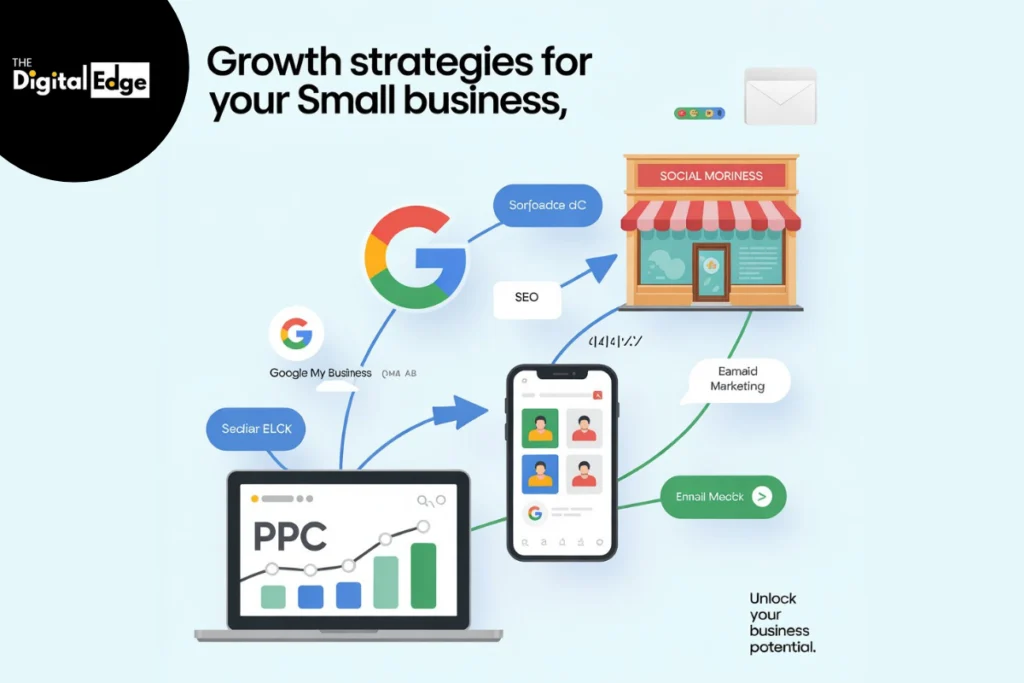
Best Digital Marketing Strategies for Local Business Growth
Every marketing small business owner has asked the question at some point:
“How can I use digital marketing to attract more local customers and grow consistently—without burning through cash?”
The truth, confirmed by both data and hands-on experience from our team at The Digital Edge, is this: Real, lasting local business growth comes from a focused, smart blend of digital marketing strategies that work in harmony. It’s not about spending more—it’s about spending wisely, targeting effectively, and consistently engaging your community.
Let’s walk through the most effective and affordable digital marketing tactics that you can implement starting today—each tailored to help local businesses grow in 2025 and beyond.
1. First, Build a Rock-Solid Digital Foundation
Your website is more than a business card—it’s your virtual storefront that operates 24/7. Even if you have great foot traffic or loyal walk-ins, the majority of your potential customers will Google you before ever walking through your door. They’re looking for your opening hours, location, product range, pricing, and most importantly—credibility.
Make sure your website is:
- Mobile-optimized (over 70% of local searches happen on phones)
- Fast-loading (under 3 seconds)
- SEO-friendly (targeting local keywords like “best bakery in Jaipur” or “digital marketing agency Ahmedabad”)
- Clear with CTAs like “Book Now,” “Call Today,” or “Get Directions”
- Linked with Google Maps and schema markup for local SEO performance
Neglecting this step is like leaving your shop lights off during business hours.
2. Nail Your Local SEO Strategy
Local SEO is one of the highest ROI marketing strategies for small businesses. Why? Because people searching locally usually have high intent—they’re ready to act.
To get this right:
- Use location-based keywords in your meta titles, descriptions, blog content, and even image alt text.
- Structure your website logically with clear categories and services for your region.
- Add schema markup and keep URLs clean.
- Embed a Google Map of your location on your contact page.
- Ensure all directory listings match your NAP (Name, Address, Phone) exactly.
And most importantly, optimize your Google Business Profile—covered in detail below.
3. Leverage the Power of Social Media Communities
Social platforms like Instagram, Facebook, and even WhatsApp Channels can fuel hyperlocal engagement. You don’t need viral content—you need relevant, local storytelling.
Use strategies like:
- Posting customer testimonials or case studies
- Sharing “Behind the Scenes” reels
- Creating UGC contests (“Post a photo with our product and tag us!”)
- Highlighting staff members or community involvement
- Joining and engaging in local Facebook Groups
- Using hashtags like #HyderabadEats or #AhmedabadStartups
These methods drive community trust, especially when your voice is authentic and consistent.
4. Prioritize Local Content Marketing
Great content doesn’t just inform—it builds authority and gets you found.
Post consistently about topics your local customers care about, such as:
- “Top 10 Things To Do in [City]”
- “Best Coffee Shops for Remote Work in [Neighborhood]”
- “How [Your Product] Helps People in [Location] Save Time/Stress/Money”
- “Seasonal Tips for [Your Service] in [City Climate]”
This content feeds your social calendar, fuels SEO, and can be repurposed for email newsletters and lead magnets. Content marketing is your long-term SEO fuel.
5. Don’t Underestimate the Power of Email Marketing
Email might not seem sexy—but it works. And it works really well for local businesses.
Start by:
- Adding a signup form to your website and checkout counter
- Offering a lead magnet (“Download our free guide to winter skincare in [City]”)
- Sending newsletters twice a month with event invites, deals, or new arrivals
- Using segmentation to send birthday offers, loyalty rewards, or abandoned cart emails
Even a list of 200–300 local, engaged subscribers can outperform 5,000 cold social followers.
6. Get Active on Review Sites and Directories
Customers trust reviews more than ads—and Google uses them as a ranking signal.
Here’s what to do:
- Claim listings on Google Business Profile, Yelp, Justdial, TripAdvisor, Sulekha, BBB, and any local directories.
- Ask for reviews through follow-up emails, QR codes at checkout, or simple asks on WhatsApp.
- Respond to all reviews—good or bad. It shows you care and boosts local SEO credibility.
- Add keywords into responses when appropriate.
This is especially crucial for service-based businesses where customer trust is everything.
7. Explore Affordable Digital Advertising
Local digital ads are now hyper-targeted and cost-effective. You don’t need ₹10,000/day to get results.
Use:
- Google Ads with location targeting and “call only” campaigns
- Facebook Ads for promotions with geo-radius targeting
- Retargeting ads to bring back website visitors
- WhatsApp Ads for local discounts or menu links
The key? Start small. Test. Optimize. Scale.
8. Partner with Other Local Businesses
Two audiences are better than one.
Examples of collaboration:
- Co-hosting workshops or pop-up events
- Sharing discount codes with complementary businesses
- Running social giveaways together
- Writing guest blogs or newsletters
This builds goodwill and helps both businesses grow through mutual exposure.
9. Monitor, Adjust, and Optimize
You can’t grow what you don’t track.
Use:
- Google Analytics to track visits, traffic sources, and user behavior
- Google Search Console for keyword performance
- Facebook & Instagram Insights to see what content works
- GBP insights to monitor calls, map views, and search queries
Look at what’s driving traffic, leads, or sales—and double down.
Final Thoughts:
At The Digital Edge, we’ve helped dozens of local businesses across industries—from salons and cafés to tutors and repair services—create what we call a “Local Growth Flywheel.” This is when your SEO, content, social, email, and ads all feed each other and grow your brand organically and affordably.
Start with one or two of these strategies. Build momentum. Stay consistent. Your community is online—be where they are.
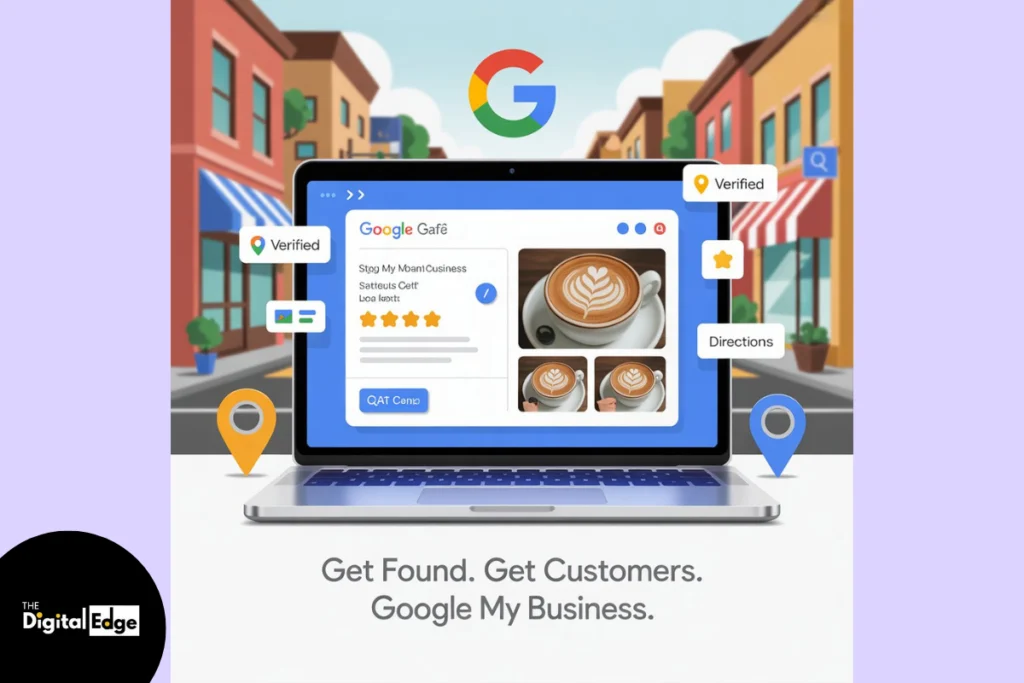
How to Use Google My Business for Local Brand Visibility
If there’s one digital tool every small business must treat as sacred, it’s the Google Business Profile (formerly Google My Business). It’s not just a listing—it’s your storefront on Google Search and Google Maps.
When optimized properly, this listing can dramatically improve your visibility, trust, and conversions—especially among customers in the final stages of decision-making.
1. Setting Up for Success.
Start by visiting Google Business Profile Manager. Verify your listing, choose the correct business category, and complete every field.
Key areas to focus on:
- Accurate and consistent NAP (Name, Address, Phone)
- Website URL
- Opening hours (including holidays)
- Appointment links
- Description with local keywords
- Service areas or delivery zones
Consistency across the web (website, directories, social) is key to avoiding confusion—and Google rewards you for it.
2. Keyword Magic in Your Description
Use keyword-rich phrases that people actually search for—but naturally.
Examples:
- “Affordable digital marketing agency in Navi Mumbai”
- “Home bakery with vegan options in Indiranagar, Bengaluru”
- “Emergency plumbing service available 24/7 in Noida”
These help your listing show up in both generic and high-intent local searches.
3. Use High-Quality, Localized Imagery
Photos increase both click-through rates and user trust. Add:
- Exterior and interior shots of your shop
- Staff portraits
- Before/after service photos
- Customer testimonials (with permission)
Businesses with visuals get up to 42% more direction requests and 35% more website visits, according to Google.
4. Harness GMB Posts to Stay Relevant
Most small businesses ignore GMB posts—and miss easy wins.
Post:
- Limited-time offers
- New arrivals or services
- Seasonal content
- Local events or blog links
Posts keep your listing active and boost engagement right inside search results.
5. Encourage and Respond to Reviews
Your reviews directly impact rankings and revenue. Ask for reviews after:
- A purchase or service completion
- A positive interaction
- Through a loyalty email or QR code
Always respond to each review with personalization. Address concerns calmly and thank happy customers by name when possible.
6. Monitor Q&A and Use Messaging
Turn on messaging in your GBP dashboard to talk directly with potential customers. Monitor the Q&A section too—many sales are lost when questions go unanswered.
7. Use Insights to Drive Smarter Marketing
GBP insights can reveal:
- What people are searching for
- How they found your business
- How many requested directions, called, or visited your site
Use this data to inform your next post, ad, or piece of content.
8. Keep Everything Updated
Update your listing if:
- Your hours change
- You add new services
- You hire new staff
- You run seasonal campaigns
Google punishes outdated listings—and so do customers
9. Integrate GBP With Your Entire Digital Strategy
Mention your profile in:
- Email footers (“Leave us a Google Review”)
- Social bios
- Blog CTAs (“Find us on Google Maps”)
- WhatsApp autoresponders
The more you reinforce your presence, the more your brand sticks in your local audience’s minds.

Local Digital Ads vs. Organic Reach: Which is Better for Small Businesses?
One of the top questions we hear at The Digital Edge is:
“Should I put my limited marketing budget into local digital ads, or focus on building long-term organic reach with content and SEO?”
Here’s the reality: It’s not about choosing one over the other—it’s about leveraging both paid and organic strategies in a way that matches your business goals, timeline, and audience behavior.
Local Digital Ads – The Fast Track to Local Leads
When it comes to driving fast, trackable results, local digital advertising wins every time. Platforms like Google Ads for local business, Facebook Ads, and Instagram Boost give you full control over audience targeting, geo-fencing, and budget—allowing you to reach your ideal customer exactly when they’re looking for what you offer.
✅ Use geo-targeting to show ads only to users in your service area.
✅ Target relevant long-tail keywords like “birthday cake delivery near [city]” or “affordable yoga classes in [neighborhood].”
✅ Launch seasonal promos or flash sales to capitalize on short-term demand.
📈 For example, a bakery could run a Google Search Ad targeting “best cupcakes in downtown Atlanta,” while a pet grooming service could run a click-to-call ad on Facebook during busy weekends.
Because you’re only paying when users click or take action, even a $5/day ad spend can drive immediate leads, foot traffic, and phone inquiries.
The Long-Term Value of Organic Reach
While local PPC advertising delivers instant traction, organic reach provides sustainable visibility that compounds over time. This includes:
- Local SEO
- Organic social media engagement
- Google Maps rankings
- Blog content
- User-generated reviews
The best part? Organic local traffic doesn’t cost per click. Once you’ve built a solid presence with local search engine optimization and content marketing, you’ll continue gaining leads—even when your ad budget is paused.
Benefits of organic digital marketing for small businesses:
- Establishes long-term search authority
- Converts better due to higher trust (users often trust unpaid results more)
- Continues to generate traffic even after you stop publishing
- Supports brand storytelling and customer education
For example, a single well-optimized blog post like “How to Choose the Right Personal Trainer in [City]” can bring in traffic for years, especially if optimized for local search queries and shared on social.
Smart Strategy: Combine Ads + Organic for Maximum Growth
At The Digital Edge, our most successful clients don’t pick sides—they merge digital ads with organic content to build momentum and authority at the same time.
Here’s how:
- Use local PPC ads to promote grand openings, new services, or seasonal discounts.
- Invest in SEO and local content marketing to build brand equity and keep your website ranking year-round.
- Share positive Google reviews, user-generated content, and blog snippets across both social and GMB (Google Business Profile).
📍Example: A hair salon in Portland might run Facebook Ads targeting “men’s haircut $10 off near me,” while simultaneously publishing SEO-rich blog posts on “top haircut styles for summer in Portland.”
Cost-Benefit Reality:
- Paid ads = Speed + control
- Organic reach = Trust + sustainability
Even with just $100/month, a smartly-run local ad campaign—paired with consistent SEO blogging—can deliver both short-term traffic and long-term loyalty.
Track What’s Working, Double Down on ROI
Always monitor performance using:
- Google Analytics (track traffic sources, conversions)
- Facebook Ad Manager (check CPM, CTR, and ROI)
- Google Business Profile Insights (calls, views, directions)
Data helps you refine ad targeting, adjust budgets, and prioritize the right content for your organic strategy. You’ll often find that a single viral blog post or top-performing ad can outperform months of trial-and-error.
The Verdict? Blend for the Best Results
There’s no one-size-fits-all answer—but for most small businesses, a hybrid digital marketing strategy works best. Focus your ad dollars on high-converting campaigns while building a foundation of content and SEO that works quietly in the background—24/7.
At The Digital Edge, we help small brands craft affordable digital marketing plans that balance short-term wins with long-term growth.

Case Studies of Small Businesses Using Digital Marketing Effectively
Nothing beats real-world examples. Here’s how local brands used these exact strategies to dominate their digital space.
🌸 Case 1: The Neighborhood Florist Blooms Online
Petal Paradise, a small Ohio flower shop, faced slowing foot traffic. With The Digital Edge’s help, they:
- Optimized their website with high-volume SEO keywords like “wedding florist [city]”
- Built a keyword-rich Google Business Profile with seasonal posts
- Collected 40+ Google reviews with in-store review cards
- Posted regular photo content to Instagram and Facebook
Result:
✅ Ranked in the local Google 3-Pack
✅ Online orders doubled
✅ Phone inquiries tripled
✅ Became the go-to florist for weddings and funerals
🏋️ Case 2: Fitness Studio Takes On National Chains
StrongRoots Fitness, a boutique gym in St. Paul, was being crushed by national franchises. Their strategy:
- Published SEO-optimized blog posts: “Best beginner yoga in [city]”
- Ran Facebook geo-ads with a “first class free” offer
- Posted daily social media stories and instructor features
- Encouraged members to leave Google and Yelp reviews
Results:
✅ +53% in class attendance
✅ #1 for “best gym [city]” on Google
✅ Facebook and GMB became top lead sources
🍝 Case 3: The Family Eatery Goes Viral
La Tavola, a traditional Italian spot, was seen as “special occasion only.” To change perceptions, we:
- Ran Google Ads for “Italian comfort food near me”
- Published blog content around local family dining
- Created daily Instagram stories featuring chefs and dishes
- Cross-promoted their GMB reviews on email and socials
Results:
✅ +54% in takeout sales
✅ Weekday dine-in grew by 37%
✅ Local press coverage and TV features followed
✅ Dominated “Italian food near [city]” searches
Key Takeaway: Consistency Beats Gimmicks
From landscapers to lawyers, the local businesses that thrive online are the ones who:
- Commit to SEO-rich content marketing
- Invest smartly in local digital advertising
- Respond to reviews and engage their community
- Adapt quickly using data and feedback
💡 The Digital Edge Advantage
We believe in marketing that feels real, not robotic. We tailor strategies to fit your voice, audience, and goals—then help you implement and evolve them with confidence.
Whether you’re running a startup bakery or a 30-year-old service firm, the tools of digital growth are at your fingertips. Use them wisely, consistently, and with heart—and your local business can become a community legend.
Some Comman FAQ
Local SEO helps your business appear in search engine results for location-based queries, such as “plumbing services in [city]” or “best bakery near me.” It connects small businesses with local customers by optimizing NAP info, targeting city-specific keywords, and gathering genuine reviews. These local SEO tips increase visibility and drive more in-store visits and conversions.
Optimizing your Google My Business profile boosts your visibility in both Google Search and Maps. Complete your profile with accurate info, upload appealing photos, post updates, and manage reviews. A well-optimized listing drives more calls, website clicks, and direction requests—making it an essential tool for affordable digital marketing for startups competing locally.
A combination of strategies works best. Prioritize local SEO with long-tail city-based keywords, maintain your Google profile, post relevant blogs, engage locally on social media, and manage reviews. Building an email list and publishing value-rich content are also cost-effective strategies to grow your business online.
Both methods have benefits. Organic efforts like local SEO build long-term visibility and trust, while Google Ads and Facebook Ads provide quick results. A smart strategy is blending both: run affordable ad campaigns while growing organic reach for maximum ROI.
Online reviews significantly affect rankings and trust. Good reviews help you appear in the “local pack” and influence buyers searching for “trusted hair stylist near me.” Asking for reviews, replying to feedback, and showcasing them builds credibility—an underrated yet powerful digital marketing tool for small businesses.
Definitely. Content like “how to find the best plumber in [city]” or “top restaurants in [neighborhood]” brings organic local traffic. Sharing blogs on social media or email amplifies reach, boosts search rankings, and positions you as a local expert—critical for digital growth.
Use tools like Google Keyword Planner to find long-tail, geo-specific terms like “emergency electrician in [city].” Add them naturally in your website copy, meta tags, and blog content. These targeted phrases bring in qualified traffic and improve local rankings.
Most local searches happen on mobile, so a fast, responsive, and easy-to-navigate site is key. Mobile optimization enhances user experience, helps your site rank higher, and ensures visitors can call or find you instantly—a must-have for local digital success.
Start with Google My Business, location-focused SEO, community-driven social media, and budget-friendly local ads. Include free tools like email marketing and review management to maximize results. These cost-effective strategies help startups grow steadily without overspending.
Use Google Analytics, GMB Insights, and ad dashboards to track website visits, calls, clicks, and review growth. These KPIs help you evaluate your strategies and double down on what’s working best for your local audience.
Looking for a digital marketing agency that actually gets what your small business needs to grow locally? At The Digital Edge, we’re not your average digital marketing company—we’re local growth partners. From local SEO services and Google Ads management to content marketing and social media strategies, we craft customized campaigns that help your brand show up, stand out, and sell more. Whether you’re just starting out or trying to outshine local competitors, our team of PPC experts and digital strategists are here to turn your clicks into customers. Let’s talk growth—reach out to The Digital Edge today.
